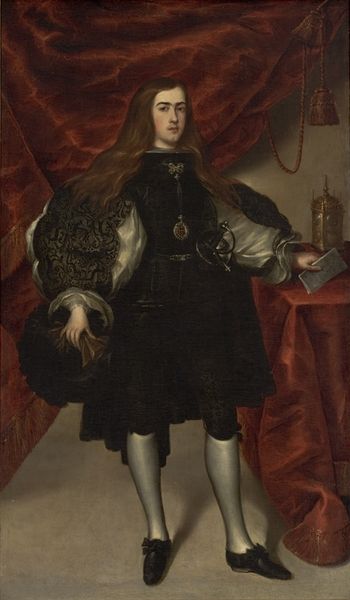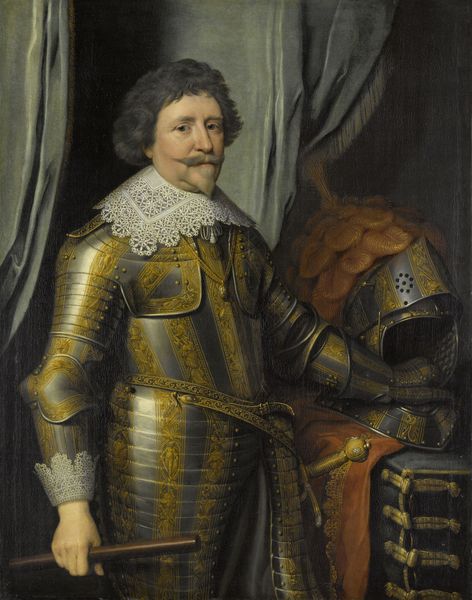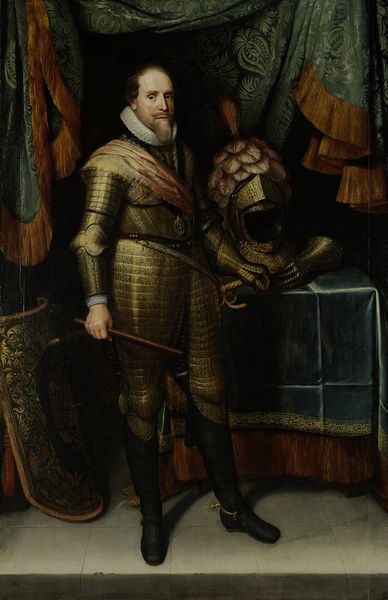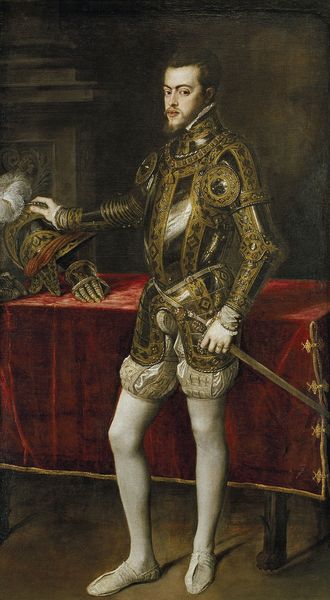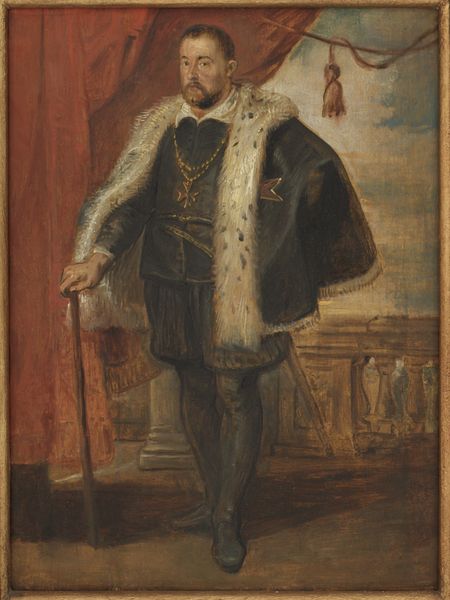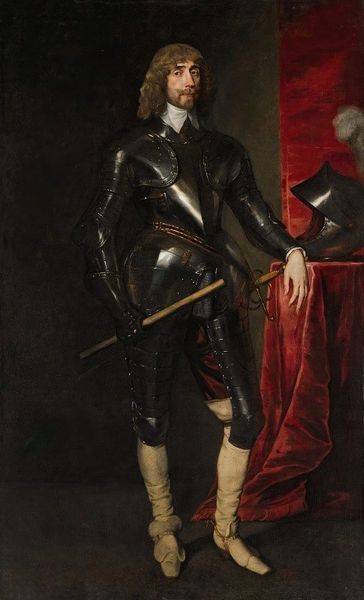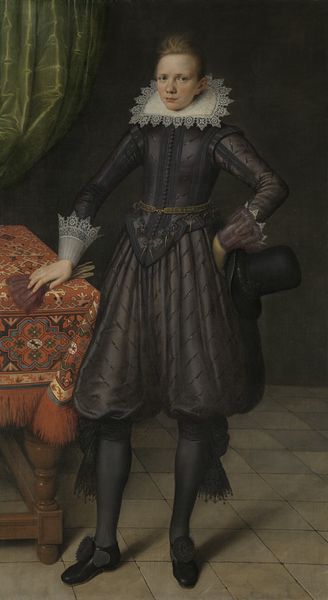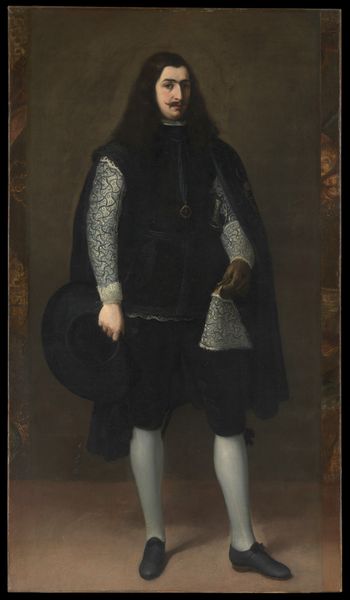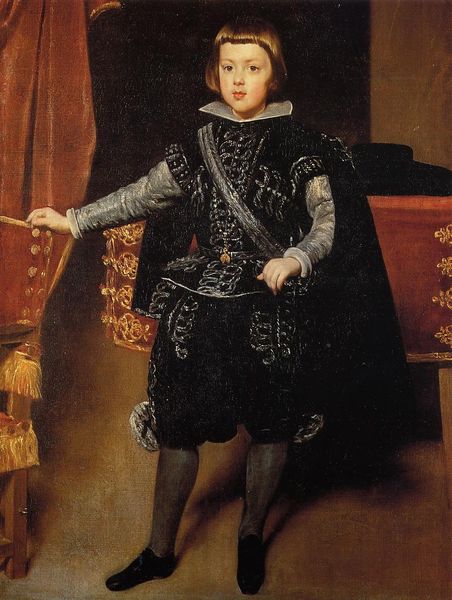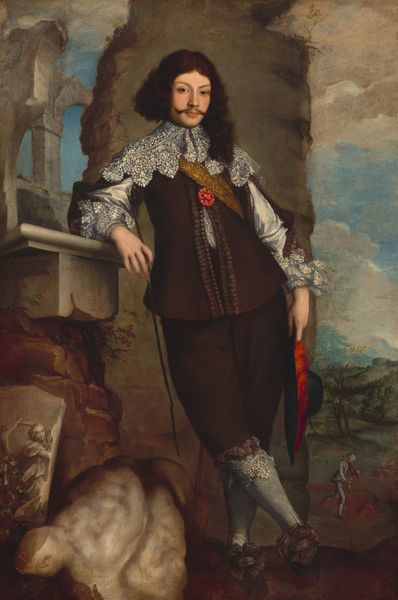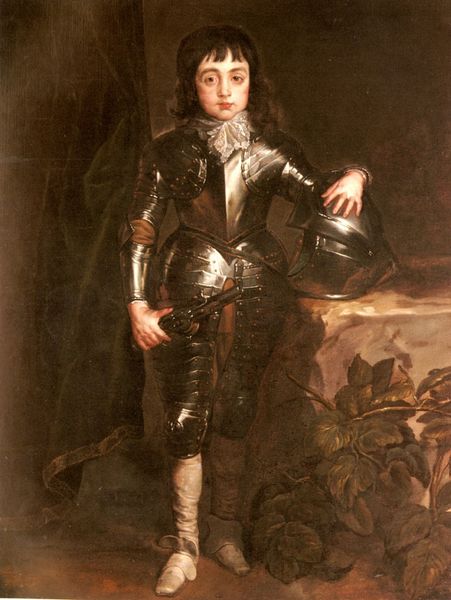
Portrait of Prince Baltasar Carlos, Son of the Spanish King Philip IV, at approximately 11 years of age 1639 - 1645
0:00
0:00
painting, oil-paint
#
portrait
#
baroque
#
painting
#
oil-paint
#
figuration
#
oil painting
#
genre-painting
#
history-painting
#
academic-art
#
realism
Dimensions: height 148.8 cm, width 113.2 cm, thickness 4.6 cm, depth 7.4 cm
Copyright: Rijks Museum: Open Domain
Editor: This is the "Portrait of Prince Baltasar Carlos, Son of the Spanish King Philip IV, at approximately 11 years of age," an oil painting made sometime between 1639 and 1645 by Juan Bautista Martínez del Mazo. It feels very formal, but the boy looks almost… uncomfortable. What can you tell me about this work? Curator: This portrait, created during the Baroque period, presents us with a fascinating intersection of personal identity and dynastic representation. The armor and baton, symbols of power and authority, are juxtaposed with the child's young face, creating a tension. Consider how portraiture, particularly of royalty, functioned within the political landscape. Editor: So, it’s about power, even in childhood? The setting feels…staged, almost theatrical. Curator: Exactly! The seemingly innocent portrayal belies a sophisticated system of constructing royal image. Martinez del Mazo, as court painter, had a very specific agenda. Think about the context: the Spanish monarchy during the 17th century, its power struggles and image management. How does this painting contribute to that broader narrative? Editor: It makes me wonder about Baltasar Carlos's actual life, behind all this royal symbolism. Was this image part of branding, even then? Curator: Absolutely. This image serves less as a window into his personality, and more as a carefully constructed projection of future power, highlighting the importance of royal lineage in maintaining political stability. Even childhood became a site of political messaging. Editor: I never thought of royal portraiture as being so calculated. Seeing it this way really changes how I view similar works. Curator: It reveals how art serves as a powerful tool for social and political maneuvering throughout history, making us think critically about the role of visual imagery in constructing our understanding of power and identity.
Comments
No comments
Be the first to comment and join the conversation on the ultimate creative platform.


